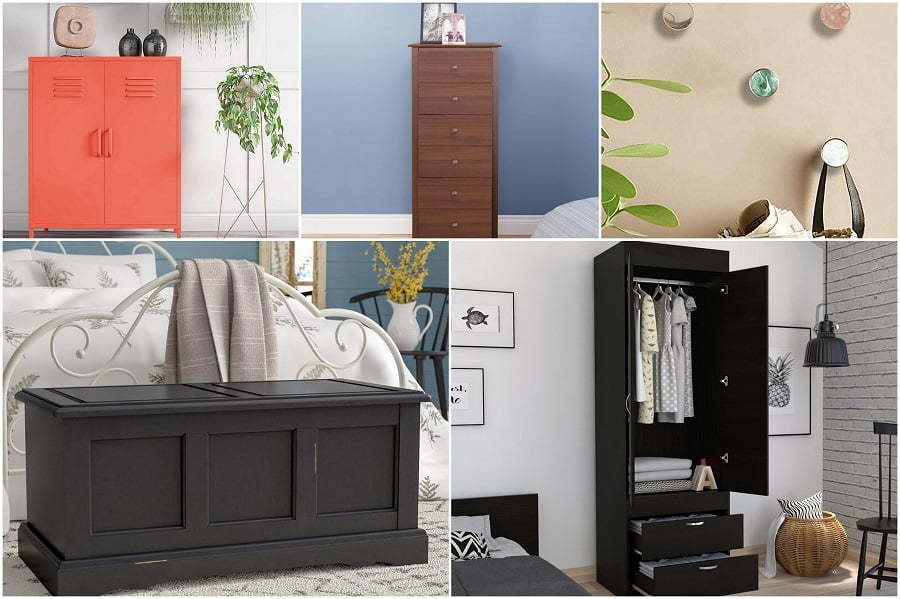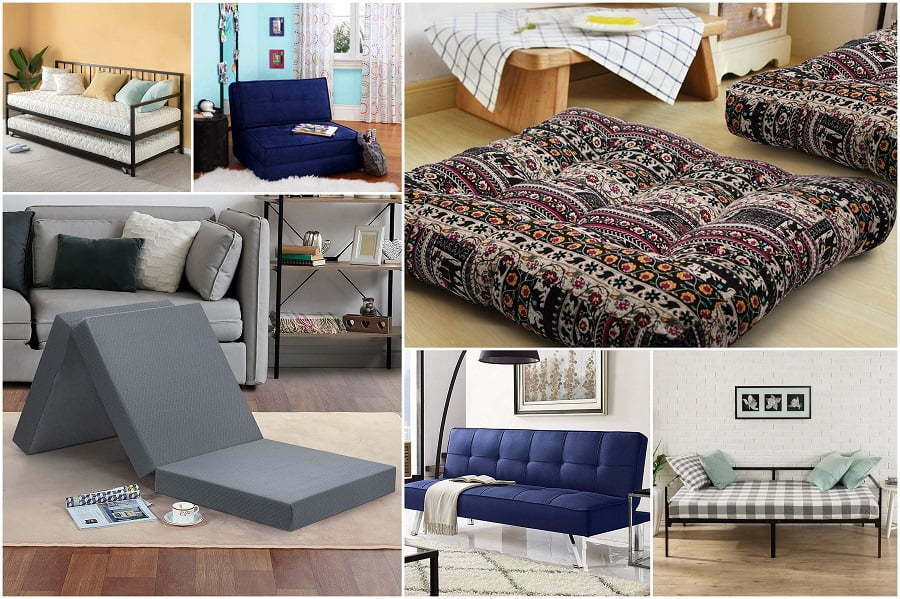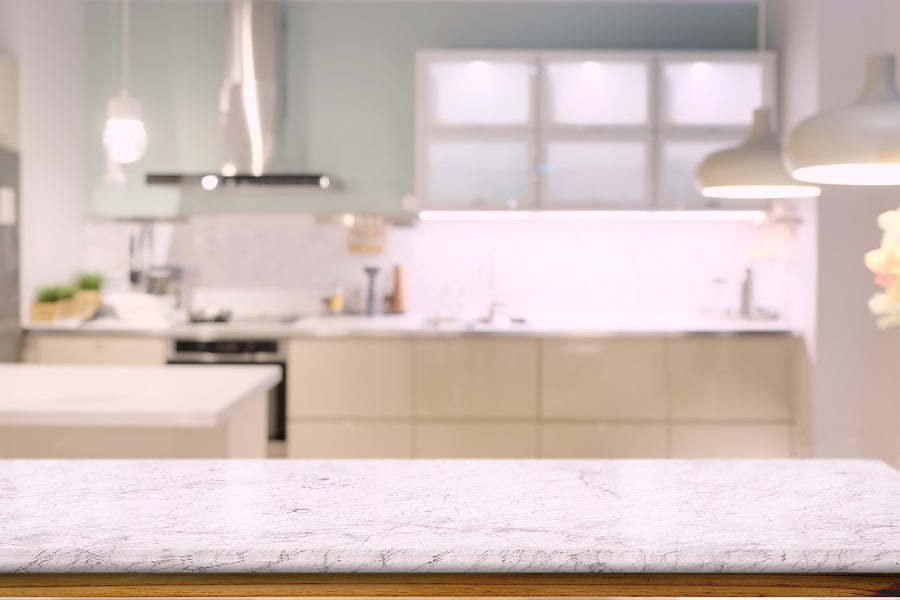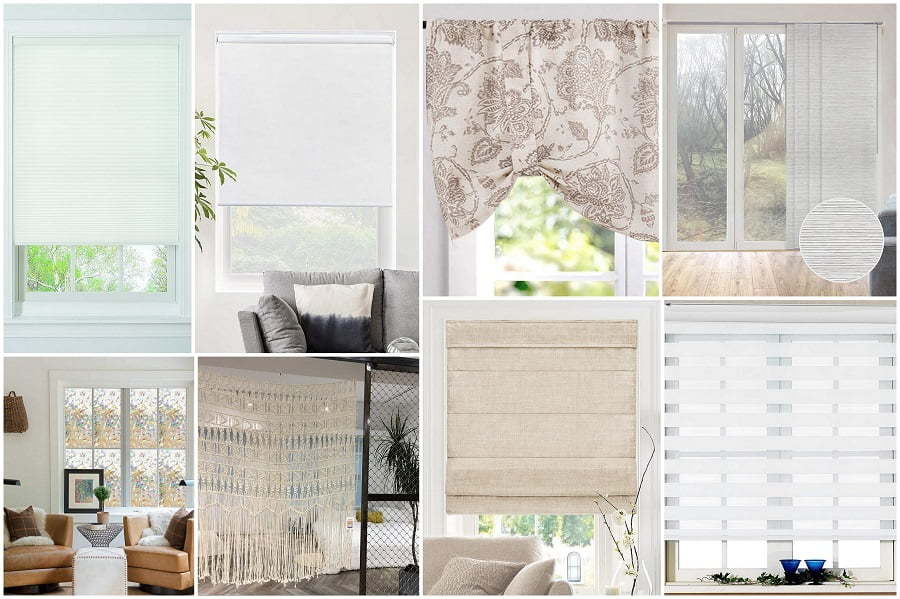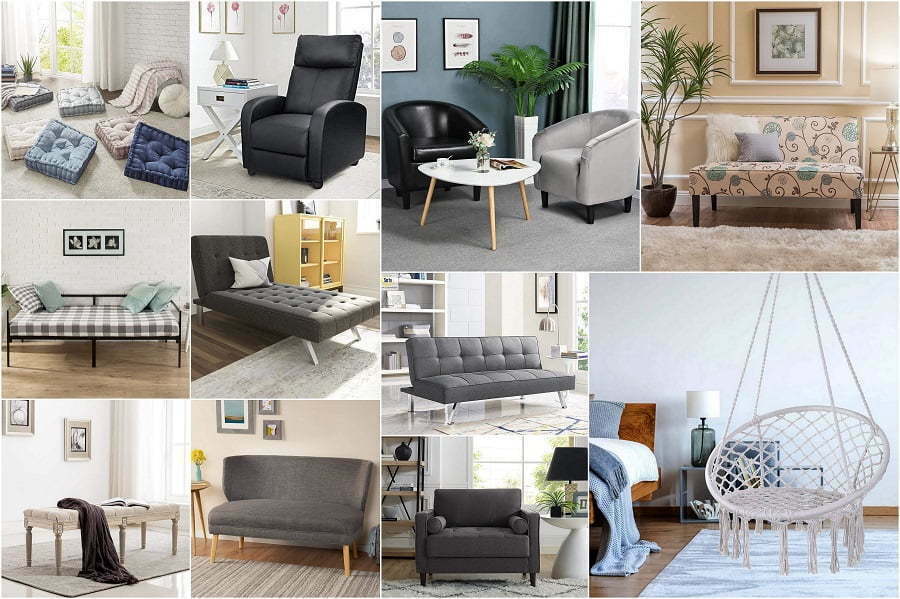Last updated on
Looking to give your lawn a break or want to try something new? These alternative ground covers will elevate your yard and reduce maintenance.
I often come across homeowners looking for ways to spruce up their outdoor space without breaking the bank. And one of the biggest challenges they face is maintaining a lush green lawn.
While a well-manicured lawn can add charm and beauty to any property, it can also be time-consuming and expensive to maintain. But fear not! Plenty of alternative options can give you an equally stunning outdoor space without the hassle of constant upkeep.
In this article, I’ve compiled 20 lawn alternatives with their advantages and disadvantages so that you can find the perfect solution for your budget and lifestyle.
So let’s dive in!
Clover

Clover is a popular lawn alternative that has been gaining popularity recently. It is a low-growing plant that can withstand heavy foot traffic and requires little maintenance.
Clover also has the added benefit of fixing nitrogen in the soil, improving soil health, and reducing the need for fertilizers.
One disadvantage of clover as a lawn alternative is its tendency to attract bees, which may be problematic for those with allergies or afraid of getting stung. Some people find clover unsightly when it flowers or grows too tall.
However, clover has many advantages as an alternative to traditional grass lawns. Not only does it require less water and mowing than grass, but it also provides a habitat for beneficial insects like butterflies and bees.
Plus, if you’re looking for an eco-friendly option that doesn’t require harmful chemicals or pesticides – look no further than this versatile plant!
Moss
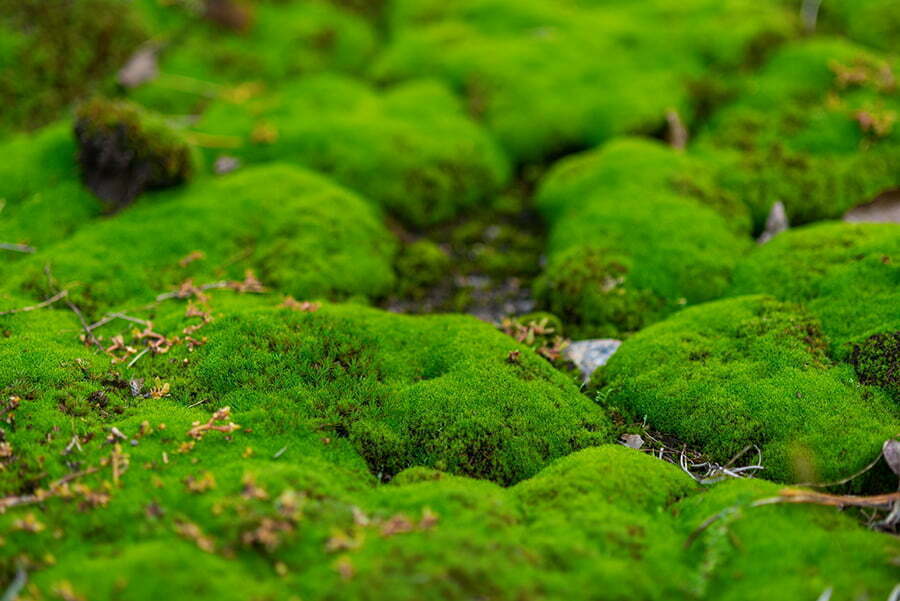
Moss is a unique and low-maintenance alternative to traditional lawns. It thrives in shady areas where grass struggles to grow, making it an excellent option for those with limited sunlight in their yard.
Moss also requires very little water, which can be a significant advantage during droughts or water restrictions.
One disadvantage of moss is that it does not handle foot traffic well and may become damaged if walked on frequently. While moss can add a beautiful green carpet-like appearance to your lawn area, some people may find its texture unappealing.
If you’re looking for an easy-to-care-for lawn alternative that adds natural beauty without requiring much maintenance or watering resources, moss might be the perfect choice!
Artificial Turf
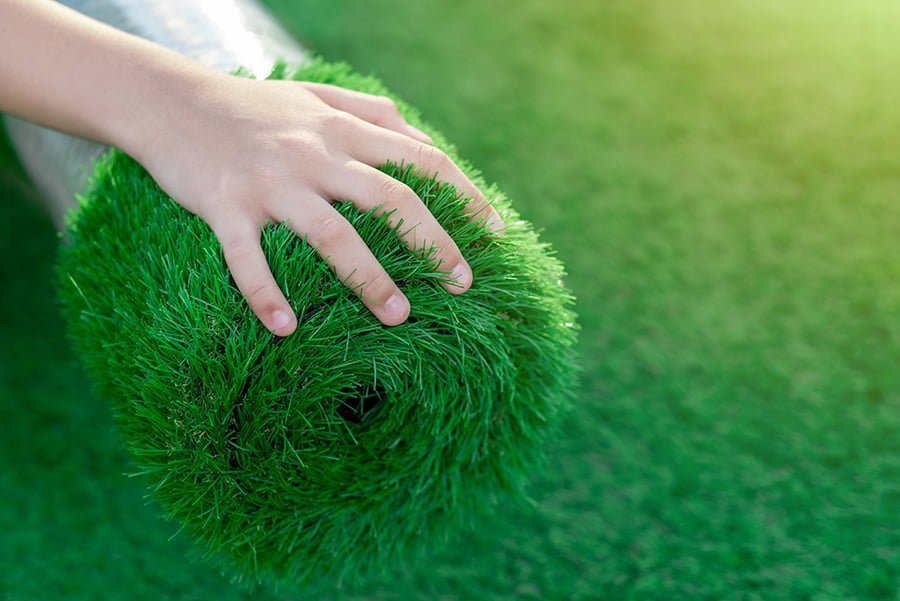
Artificial turf is a popular lawn alternative that has gained popularity in recent years. It is made of synthetic fibers that mimic the look and feel of natural grass.
One advantage of artificial turf is its low maintenance requirements, as it does not require watering, mowing or fertilizing like natural grass. It can withstand heavy foot traffic and extreme weather conditions without getting damaged.
However, there are also some disadvantages to consider when choosing artificial turf as a lawn alternative.
Firstly, it can be pretty expensive to install compared to other options, such as ground covers or wildflower meadows.
Secondly, while modern versions have improved drainage systems built in for rainwater runoff, older models may cause water pooling which could lead to mold growth if left unattended.
Lastly but most importantly for many people who prefer eco-friendly alternatives: artificial turfs are not biodegradable and do not contribute positively towards the environment. Unlike other organic alternatives such as clover lawns or moss gardens, which help reduce carbon footprint by absorbing CO2 from the atmosphere through the photosynthesis process thereby reducing greenhouse gas emissions into our environment over time.
Groundcover Plants
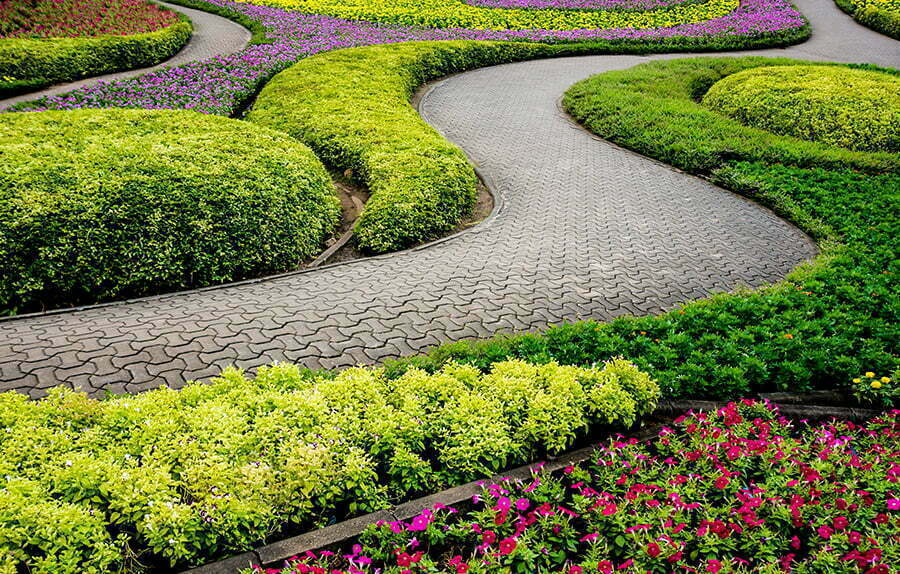
Groundcover plants are a great alternative to traditional lawns. They can add texture and color to your landscape while also reducing the amount of maintenance required.
Some popular groundcover options include creeping thyme, sedum, and clover.
One advantage of using groundcovers is that they require less water than traditional lawns since they have shallow root systems that don’t need as much moisture. Many types of groundcovers are drought-tolerant and can survive in areas with little rainfall.
However, there are some disadvantages to consider when choosing this option for your lawn replacement project. Groundcovers may not be suitable for high-traffic areas or places where you want a more uniform look since they tend to spread unevenly over time.
If you’re looking for an eco-friendly way to replace your lawn while adding visual interest to your yard simultaneously, exploring different types of groundcover plants could be worth considering!
Mulch Beds

Mulch beds are a popular alternative to traditional lawns. They cover the ground with organic or inorganic materials such as wood chips, bark, leaves, stones, or gravel.
Mulch beds have several advantages over grass lawns: they require less maintenance and water, they prevent weed growth and soil erosion, and they can add texture and color to your landscape design.
However, there are also some disadvantages when choosing mulch beds as a lawn alternative. For example, some types of mulches may attract pests like termites or rodents if not properly installed or maintained.
Certain mulches may decompose quickly over time, so you will need to replace them more frequently than other options.
If you’re looking for an easy-to-maintain lawn alternative that adds visual interest while being budget-friendly, then creating a beautiful bed using different kinds of natural materials could be just what you need!
Gravel and Pebbles
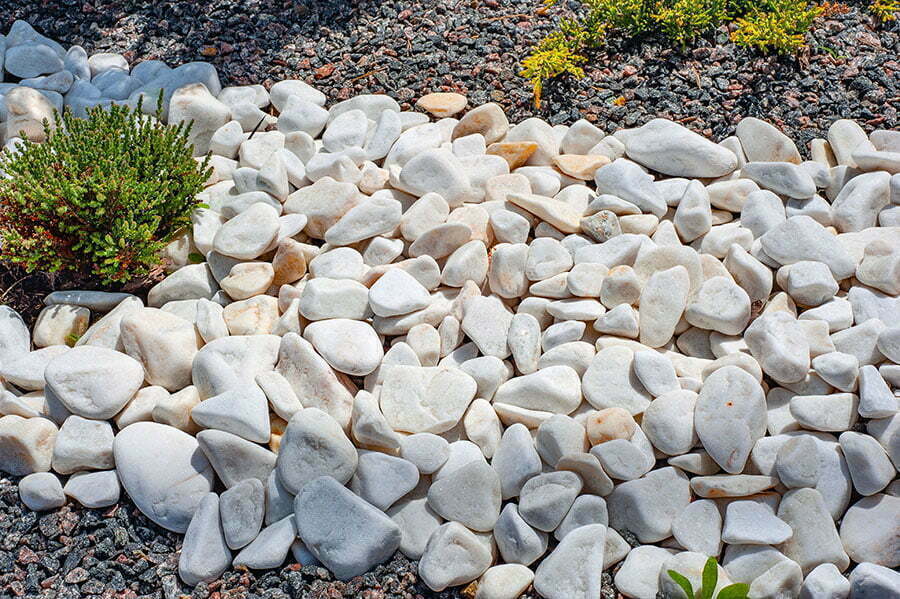
Gravel and pebbles are a popular lawn alternative that can add texture and interest to your outdoor space. They come in various sizes, colors, and shapes, making it easy to create unique designs.
One of the advantages of using gravel or pebbles is that they require very little maintenance compared to traditional lawns. You don’t have to worry about mowing or watering them regularly.
Another advantage is their durability; they can withstand heavy foot traffic without getting damaged easily. However, one disadvantage of using gravel or pebbles as a lawn alternative is that they tend to absorb heat during hot weather conditions, which may make them uncomfortable walking barefoot.
Weeds may still grow through the gaps between stones if proper weed barriers are not installed underneath the layer of rocks/gravel/pebbles used for landscaping purposes.
With proper installation techniques such as laying down landscape fabric before adding any stone material will help prevent weed growth while also providing an attractive look at an affordable price point!
Paving Stones

Paving stones are a popular alternative to traditional lawns. They come in various shapes, sizes, and colors that can add texture and interest to your outdoor space.
Paving stones are durable and require minimal maintenance compared to grass lawns. They also provide a stable surface for walking or driving on.
However, paving stones can be expensive upfront compared to lawn alternatives like mulch or gravel. Installation requires some expertise as it involves leveling the ground before laying the pavers down properly.
Another disadvantage is that they tend to retain heat which could make them uncomfortable during hot weather conditions. Weeds may grow between the gaps if not installed correctly or maintained regularly.
Paving stones offer an attractive option for those looking for low-maintenance lawn alternatives with long-lasting durability but at a higher cost than other options available today.
Perennial Gardens
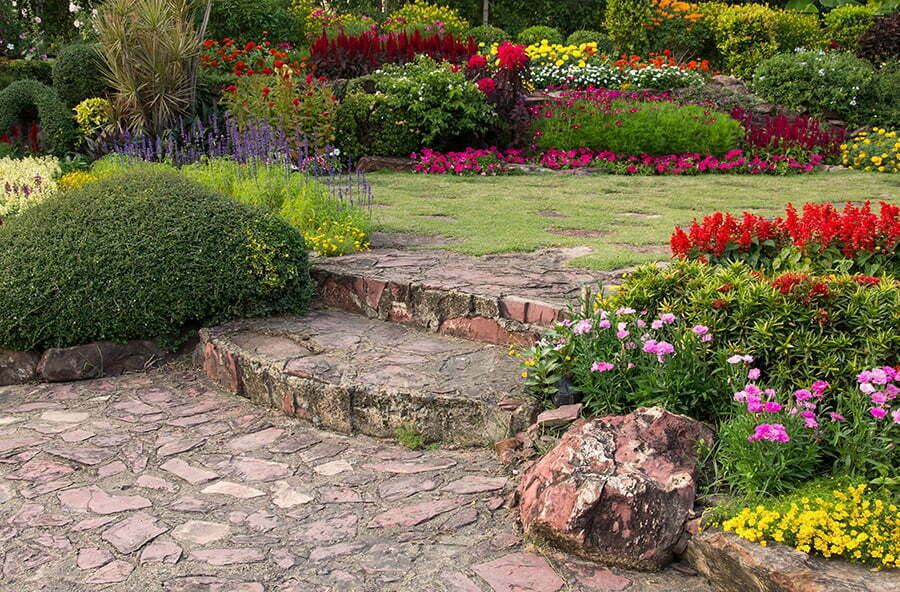
Perennial gardens are a popular alternative to traditional lawns. These gardens consist of plants that come back year after year, making them a low-maintenance option for homeowners.
Perennials also offer the advantage of adding color and texture to your yard throughout the growing season.
One disadvantage of perennial gardens is that they require some planning and maintenance to thrive. You’ll need to choose plants suited for your climate and soil type and ensure proper watering and fertilization.
Some perennials may require pruning or deadheading to keep them looking their best.
Despite these challenges, many homeowners find perennial gardens worth the effort due to their beauty and sustainability. With careful planning and attention, you can create a stunning garden space that will provide enjoyment for years while reducing your reliance on water-intensive lawns.
Wildflower Meadows
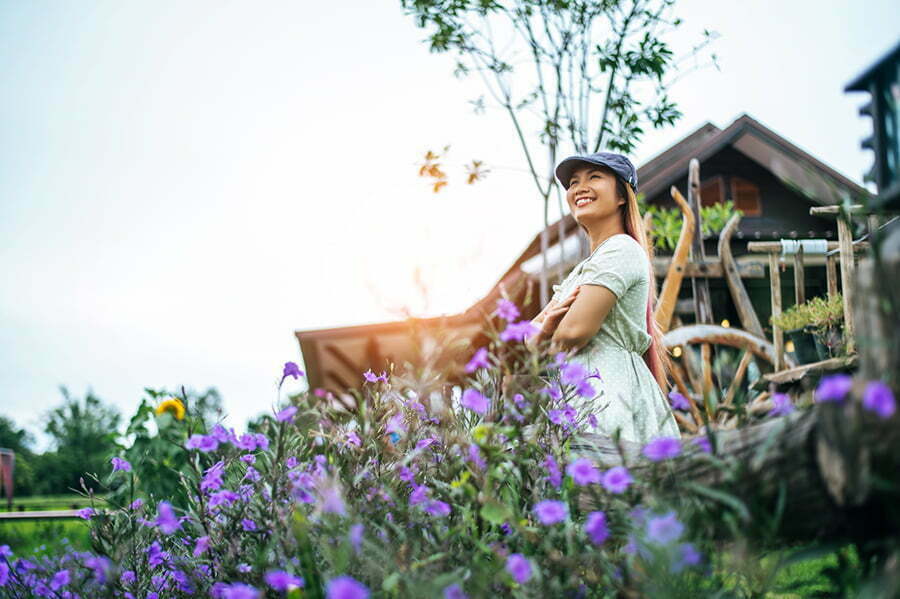
Wildflower meadows are a beautiful and eco-friendly alternative to traditional lawns. They provide a natural habitat for pollinators such as bees and butterflies while reducing the need for watering, mowing, and fertilizing.
Wildflower meadows can be created by sowing wildflower seeds or planting plugs of native grasses and flowers.
One advantage of wildflower meadows is their low maintenance requirements once established. They must only be mowed once or twice a year in late fall or early spring to prevent woody plants from taking over the area.
However, one disadvantage is that they may not suit all climates or soil types. It’s important to research which species will thrive in your specific region before planting.
Creating a wildflower meadow can add beauty and biodiversity to your outdoor space while being budget-friendly in terms of maintenance costs over time.
Native Grasses
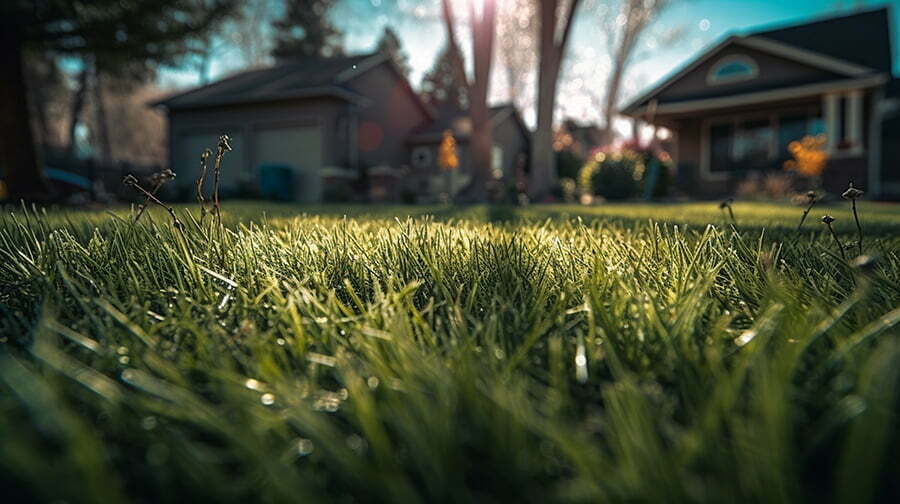
Native grasses are an excellent option for those looking to create a low-maintenance lawn alternative. These grasses are adapted to the local climate and soil conditions, making them more resistant to pests and diseases.
They also require less water than traditional turfgrass, which can benefit areas with limited water resources.
One advantage of native grasses is their ability to attract wildlife, such as birds and butterflies. They provide a habitat for these creatures while adding visual interest to your yard.
However, one disadvantage of native grasses is that they may not have the same uniform appearance as traditional turfgrass. Some varieties may grow taller or have different textures than others, creating an uneven look in your yard.
If you’re looking for a sustainable lawn alternative that requires minimal maintenance and supports local wildlife, consider incorporating native grasses into your landscaping plan.
Drought-tolerant Plants
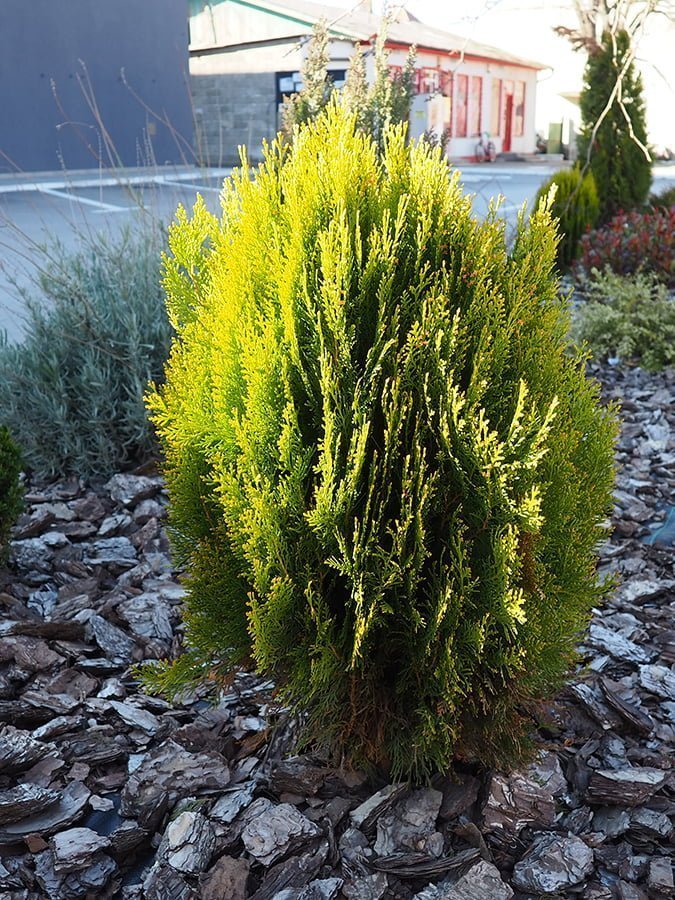
Drought-tolerant plants are a popular choice for those who want to conserve water and reduce maintenance costs. These plants have adapted to survive in dry conditions and require minimal watering once established.
The advantages of using drought-tolerant plants include their ability to thrive in hot climates without constant watering. They also come in various colors, textures, and sizes, which can add interest and diversity to your landscape design.
However, some disadvantages should be considered before choosing this option. Drought-tolerant plants may not have the same lush green look as traditional lawns.
They may take longer than expected to establish themselves or require more attention during their initial growth period.
Overall, incorporating drought-tolerant plant species into your landscaping is an eco-friendly way of reducing water usage while maintaining an attractive outdoor space.
Woodland Garden
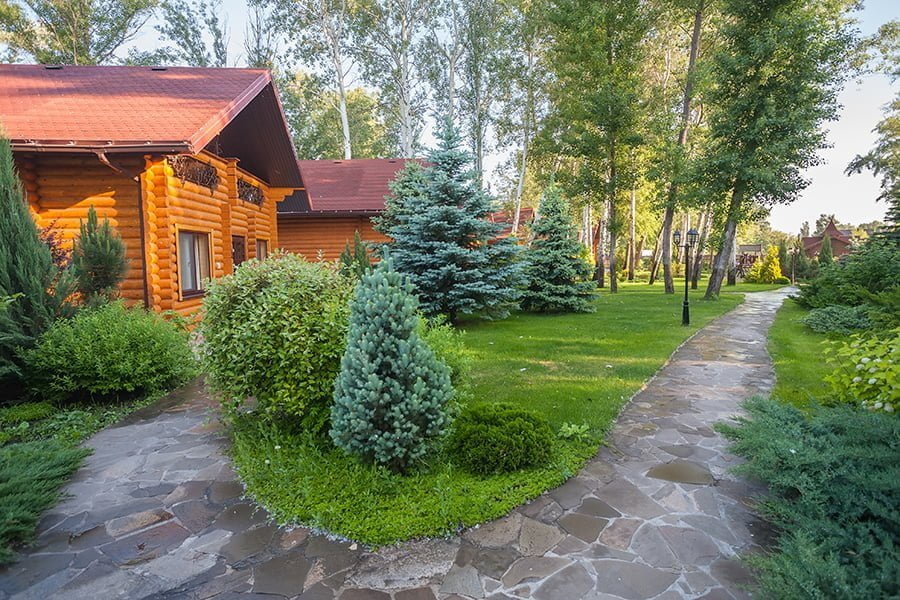
If you’re looking for a lawn alternative that is low-maintenance and eco-friendly, consider creating a woodland garden. This type of garden mimics the natural environment found in wooded areas and can be created in sunny or shady spots.
The advantages of a woodland garden include its ability to attract wildlife such as birds, butterflies, and bees. It also requires less watering than traditional lawns since many plants used in this type of garden are native species adapted to local climate conditions.
However, there are some disadvantages to consider when creating a woodland garden. One potential issue is the amount of shade it may create, which could limit plant options if your goal is a variety or color diversity.
Depending on where you live, there may be restrictions on what types of plants can be used due to invasive species concerns.
If you’re looking for an alternative lawn option that provides beauty while being environmentally friendly, then exploring the idea behind creating your own unique Woodland Garden might just fit perfectly with what you need!
Edible Landscaping
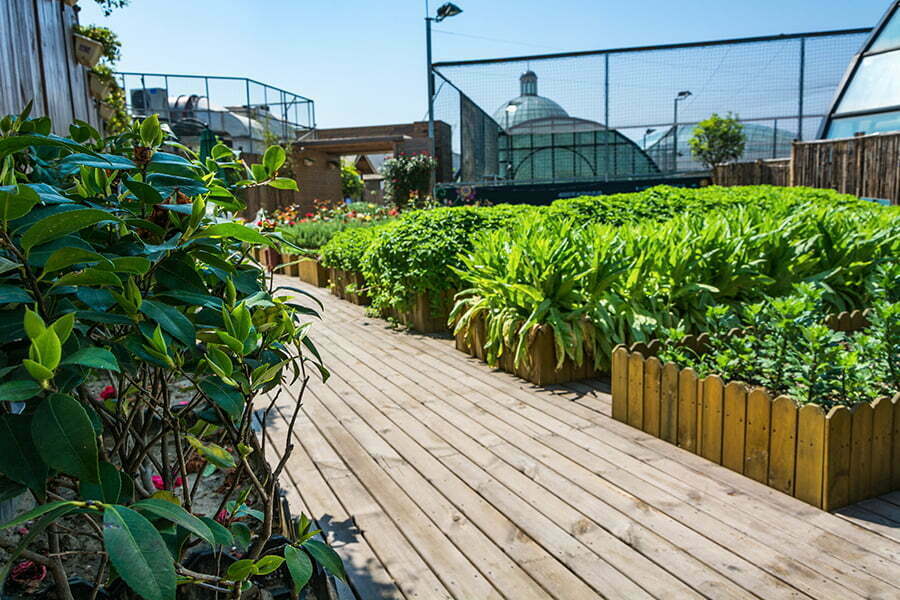
Edible landscaping is a unique and practical way to create an alternative lawn. Instead of planting grass, you can plant edible plants such as fruits, vegetables, herbs, or even nut trees.
This type of landscaping not only provides a beautiful view but also offers fresh produce for your family’s consumption.
One advantage of edible landscaping is that it saves money on groceries since you can grow your food at home. It promotes healthy eating habits by providing easy access to fresh and organic produce.
However, there are some disadvantages to consider when choosing this option for your lawn alternative. Edible plants require more maintenance than traditional lawns because they need regular watering and fertilizing to thrive properly.
Also, if you have pets or wildlife in the area that may be attracted by the smell of ripe fruit or vegetables growing in your yard, this could pose a problem.
Overall though, with proper care and attention given to maintaining an edible landscape garden, it can provide both beauty as well as sustenance, all while being budget-friendly!
Rock Gardens

Rock gardens are a great alternative to traditional lawns, especially for those who live in areas with poor soil quality or limited water resources. They can also add an exciting and unique element to your outdoor space.
Rock gardens typically consist of rocks, gravel, sand, and drought-resistant plants such as succulents or cacti.
The advantages of rock gardens include low maintenance requirements since they do not require mowing or watering like traditional lawns. They can be designed in various shapes and sizes to fit any yard size or shape.
However, there are some disadvantages when choosing a rock garden over a lawn. One major drawback is that it may not provide the same level of softness underfoot as grass does, which could make it less comfortable for children to play outside.
If you have pets that enjoy running around on the lawn, then this might not be suitable for them either.
If you’re looking for an eco-friendly option that requires minimal upkeep while still providing visual interest, creating a rock garden could be just what your yard needs!
Zen Garden
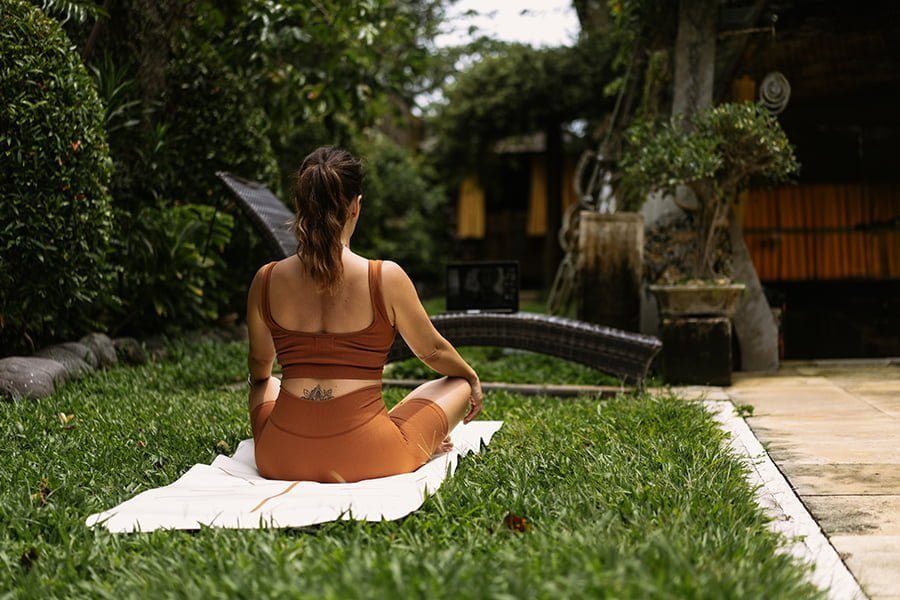
One of the most popular lawn alternatives is a Zen garden. This garden originated in Japan and is designed to promote relaxation and meditation.
A Zen garden typically consists of sand or gravel raked into patterns, along with rocks, plants, and other natural elements.
The advantages of a Zen garden include its low maintenance requirements – there’s no need for watering or mowing! It also provides an opportunity to create a peaceful space for reflection and mindfulness.
However, one disadvantage may be the initial cost of creating a traditional Japanese-style Zen garden with imported materials such as stones from Japan. Some people may find it challenging to maintain the intricate patterns in the sand over time without proper training or experience.
Overall though, if you’re looking for an alternative lawn option that promotes tranquility while requiring minimal upkeep, then consider adding a beautiful zen-inspired space to your home decor repertoire!
Xeriscaping
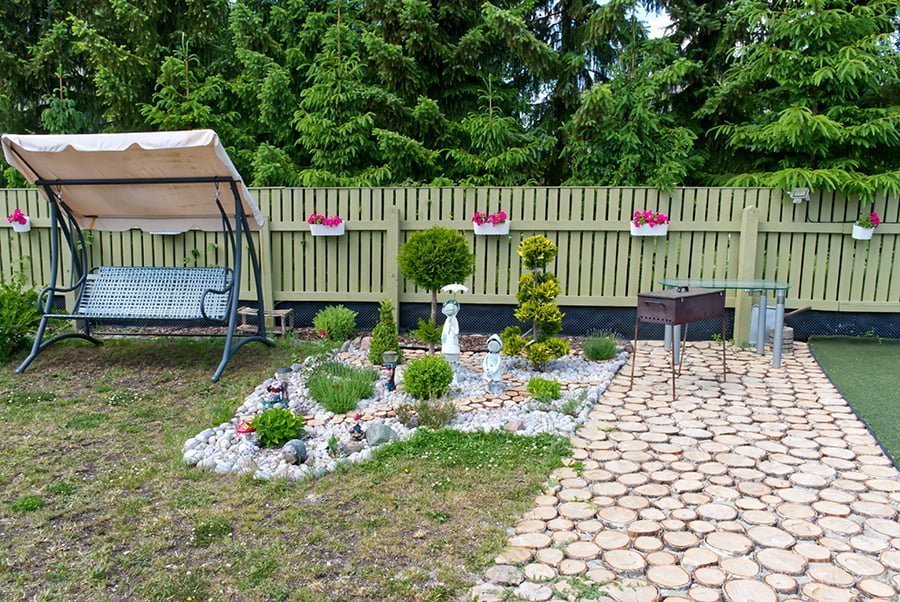
Xeriscaping is a landscaping technique that involves using plants and materials that require minimal water. This method is perfect for those who live in areas with limited rainfall or want to conserve water.
Xeriscaping can also be an excellent alternative to traditional lawns requiring constant watering and maintenance.
One of the advantages of xeriscaping is its low maintenance requirements. Once established, xeric gardens need little attention beyond occasional weeding and pruning.
This type of landscaping can save homeowners money on their water bills since it requires less irrigation than traditional lawns.
However, there are some disadvantages to consider when choosing a xeriscape over a lawn. For example, many people find the aesthetic appeal of a lush green lawn more attractive than rocks or desert plants commonly used in xeric gardens.
Also, if not designed correctly or appropriately maintained by professionals like landscapers or gardeners who specialize in this area, weeds may take over quickly, making it look unkempt.
If you’re looking for an eco-friendly way to landscape your yard while saving time and money on upkeep costs then considering Xeriscape might just be what you need!
Green Roof
Green roofs are a unique and eco-friendly alternative to traditional lawns. They involve covering the roof of a building with vegetation, creating an attractive and functional space that can provide insulation, reduce energy costs, and improve air quality.
Green roofs also help to absorb rainwater runoff, reducing the risk of flooding in urban areas.
One advantage of green roofs is their ability to create additional outdoor living spaces in densely populated cities where ground-level greenery may be limited.
However, they require specialized installation techniques and maintenance procedures, making them more expensive than traditional roofing options.
Not all buildings are suitable for green roofs due to structural limitations or lack of access for maintenance purposes. It’s essential to consult with professionals before deciding if a green roof is suitable for your home or building project.
If you’re looking for an innovative way to add some natural beauty while improving environmental sustainability on your property, consider installing a beautiful “green” rooftop garden!
Living Ground Covers

Living ground covers are a great alternative to traditional lawns. They not only add beauty and texture to your landscape but also provide many environmental benefits.
Some popular living ground cover options include clover, creeping thyme, and moss.
Clover is an excellent choice for those looking for a low-maintenance option that requires little watering or mowing. It’s also drought-tolerant and can fix nitrogen in the soil.
Creeping thyme is another popular option that adds color with its purple flowers while emitting a pleasant fragrance when stepped on or brushed against.
Moss is perfect for shady areas where grass struggles to grow as it thrives in moist environments with minimal sunlight exposure.
While these living ground covers have their advantages such as being eco-friendly and cost-effective alternatives to traditional lawns, they do come with some disadvantages too. For example, some may attract bees which could be problematic if you’re allergic or have young children playing outside frequently.
Certain types of living ground covers, like moss, require specific growing conditions making them less versatile than other options available today.
Recycled Rubber Mulch
Recycled rubber mulch is a popular alternative to traditional wood mulch. It is made from recycled tires and provides an eco-friendly option for reducing waste.
One of the advantages of using recycled rubber mulch is that it lasts longer than traditional wood chips, which means less maintenance in the long run. It does not attract insects or rodents as some organic materials do.
However, there are also some disadvantages to consider when using this lawn alternative. Recycled rubber can get hot in direct sunlight and may cause burns if touched with bare skin or paws (for pets).
It can also emit a strong odor initially due to its manufacturing process, but it will dissipate over time.
Recycled rubber mulch can be an excellent choice for those looking for an eco-friendly and low-maintenance option, but it should be used with caution around children and pets due to potential heat issues.
Chamomile Lawn
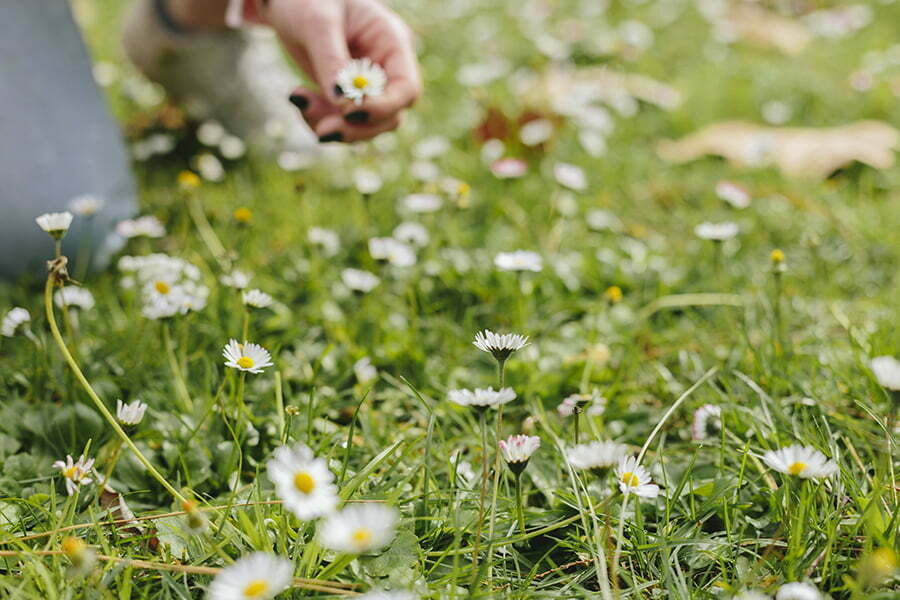
Chamomile lawn is a unique and fragrant alternative to traditional grass lawns. This type of lawn is made up of low-growing chamomile plants that release a pleasant aroma when stepped on or mowed.
Chamomile lawns are easy to maintain, requiring little watering and no fertilizers or pesticides.
One advantage of having a chamomile lawn is its aesthetic appeal. The bright green foliage and small white flowers create an inviting atmosphere in any outdoor space.
The scent released by the crushed leaves can have calming effects on those who spend time in the area.
However, there are also some disadvantages to consider before choosing this option for your yard. Chamomile lawns do not hold up well under heavy foot traffic or pets running around, so it may not be suitable for families with active children or dogs.
Suppose you’re looking for an eco-friendly and visually appealing alternative to traditional grass lawns that requires minimal maintenance but isn’t subjected to heavy use from people/pets. In that case, chamomile might just be what you need!
Recap
